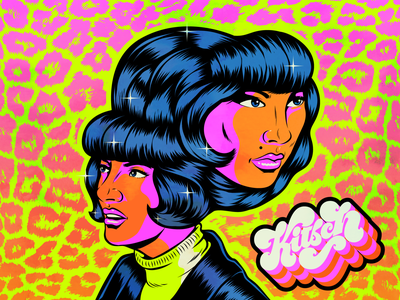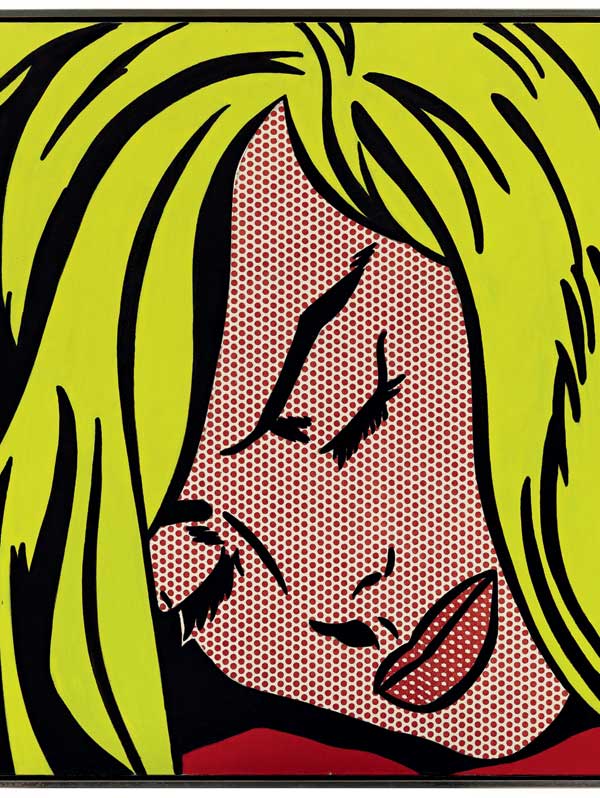
Folklore is the body of cultural traditions that are shared by a community. These include tales, proverbs or jokes as well as oral traditions. These traditions may originate in a particular area and are passed down through the generations. Folklore includes stories, fairy tales and jokes.
Folklore in different forms
Folklore is a collection of cultural and linguistic expressions from individuals and communities. They can be classified according to their cultural and social background, their place in society, and their personal context. Folklore forms can also be classified according to their individual meaning. Some folklore may be combined and used in another form.
Folklore is intended to help people learn from the everyday. Folk tales often try to soften the realities of life and give tips on living well. Folklore is a powerful way to pass on living traditions and culture.

Folklore Characteristics
Folklore is a form of storytelling that is associated with specific cultures. Folklore is a type of cultural heritage that allows researchers to study the evolution and history of cultural practices. These stories are usually figurative and evocative. They often reflect the culture of the people who told them.
In the 1960s, there was a drive for a broad definition of folklore. This was done in order to distinguish folklore from other disciplines and to define it in the modern age. This was especially important in a time of revival of folk song and questions about folk songs' authenticity.
Sources for folklore
Many different sources can be used to research folklore. You can find a wealth of data in dictionaries, compiled by both folklorists and non-folklorists. These dictionaries add a significant amount to more commonly used folklore data.
Folklore is often passed on orally via a tradition bearer. Whether they are a mother singing lullabies to a baby or a local Irish dance group performing at a festival, they transmit the traditional knowledge. These individuals are usually well-known within their community and are considered reputable experts on the subject.

Criteria for defining folklore
Folklore can be defined using a number of criteria, each with its own unique set of criteria. Some of these criteria have evolved over time, while others are new and untested. This article will explore the criteria used by some scholars. We will examine the history of a term to determine whether it is suitable for a piece of literature.
One of most common criteria is the identification of what folklore is composed of. In the 1960s, a collective push was made to define folklore in modern times and to make clear its differences from other fields of study. Richard Dorson's fight against fake culture and growing popularity of folk song revival were key factors in the drive to define folklore.
FAQ
What is pop media culture?
Pop culture is all around us. It is everywhere: TV, radios, films, music, magazines and newspapers, websites, social media, etc. We are surrounded by it 24/7. It affects everything from music to clothing and food to politics and religion. What is pop culture exactly? Wikipedia states, "Popular Culture (or Popular Culture) is the mass production of ideas and products for mass consumption." Many people think that this term applies to television shows, movies, music, fashion, and other forms of entertainment. However, there is much more to pop culture than just entertainment. This term refers to anything consumed by the masses such as video games and sports, toys or clothing, fast food, political campaigns and many other things.
How did pop culture develop?
The development of popular culture was driven by technology. It evolved as people became mobile. The invention of the radio enabled mass communication. This was the beginning of television, which eventually led to the birth of the internet.
Computers became popular at home when people were introduced to computer games. These games were played on consoles, such as the Nintendo Wii and Sony Playstation3. These games are now available online for free. Many people choose to play videogames instead of watching television.
Video games are very much in demand among teenagers and children. These games can be played by one person or with others via the internet. Call Of Duty or Grand Theft Auto can be very violent. These games can cause serious harm to children, so parents should be concerned about their children. Others find it interesting to see what happens if a character dies.
Music videos are another way that pop culture influences youth. They offer information on current celebrities and trends. These celebrities are a favorite of young people. It's obvious that music is a major part of our lives.
Artists often use special effects to enhance music videos. For example, rappers wear wigs and makeup to look more attractive. Other musicians put themselves through extreme physical challenges to show off their bodies. Many singers perform while wearing costumes.
Music is available in a wide variety of formats today. You can listen whatever music you want. However, this isn’t always good news. Sometimes music can encourage violence. People are often angry when they hear certain songs or words. Sometimes, they even commit criminal acts.
This happened recently with rapper 50 Cent. The line from his song Get Rich Or Die Trying is "I'm going down a motherfucker / I don’t know why, but I might." Someone heard this song and thought it meant that he was going to kill someone. A man threatened him and called him up. 50 Cent changed the lyrics. It now says, "I'll shoot one bitch down/ I don’t know why, but I just might."
Popular culture is essential. We need to understand how it affects us. If we don’t understand how it affects us, we won’t be able prevent its harmful effects.
What are some positive aspects of pop culture?
There are some things about pop culture that aren't bad. Pop culture gives people something to talk. Pop culture allows people to express themselves creatively. Pop culture can be used to promote artists' work.
Pop culture brings people together. Everyone wants to see the same shows. Everyone listens to the same music. Everybody likes the exact same movies. Pop culture allows us to connect.
Not all pop culture is healthy. Many films glorify violence. Some TV programs mock people with mental disabilities. Some bands even encourage their fans to use drugs.
So, what can we do with pop culture's negative side?
We should try to avoid the negative parts of pop culture. We shouldn't let it influence us. It can have negative effects on our health. It can even lead criminality. It can even lead to a loss of love.
Pop culture can also be a source of help or harm to society. Are they promoting positive values? Are people being influenced into doing bad things?
And finally, we should ask ourselves whether we're happy with the kind of world we live in. Do we like the music we listen to? The TV programs we watch What clothes do you wear?
We must be responsible for our actions if we are to care about the future. Decide what kind of world you want. Then, we can choose which type of pop culture to follow.
What is the popular music culture?
Popular Music Culture can take many forms.
The use of certain music styles (e.g. jazz, rock) and lyrics is what defines popular music culture. It also includes the impact of visual media such as television, fashion and advertising on artists' careers, as well as public perception.
It's also about the way fans interact with their favorite artists.
The rise of superstars - musicians who have made a name for themselves - is one aspect of popular music culture.
These stars often transcend genres, becoming cultural icons and influencing the evolution of popular music.
Some other elements of popular music culture are:
* The rise of recording technology -- from acoustic instruments and electric guitars to microphones and microphones.
* The invention of record players and radios;
* The birth of rock'n roll.
* Introduction of film and TV;
* The birth of MTV/VH1;
* The creation the internet.
What examples are there of pop culture in 2021
Two hijacked airplanes from terrorists crashed into New York City's twin towers on the 11th September 2001. 9/11 would be the name of this day.
These events have had a profound impact on popular culture, and they continue to have an influence today. The event can be seen in many ways as it has influenced our lives.
This includes television shows such as 24 and movies such as United 93, which tells the story of what happened during the flight from Boston to Los Angeles on 9/11. This includes books such as The Forever War by Dexter Filkins.
Everybody can recall exactly where they were when the attack occurred. Some people got up and went outside, while others read the newspapers or watched TV.
Pop culture is something that changes every year. Pop culture is a reflection of society and an inspiration. How will pop culture evolve in the coming year? It's too early to tell. We know that it will be different from what it was before.
What are some examples pop culture trends for 2020?
The music industry is changing quickly. This year saw artists like Travis Scott, Post Malone, Billie Eilish and Billie Eilish reach number one on Billboard’s Hot 100 Chart. This was a remarkable achievement for any artist.
The same goes for streaming services. Spotify reported that it streamed more than 10 billion hours worth of audio content last fiscal year. This is 5x the amount of audio content Spotify users listen to today, compared to just five year ago.
This has led to a dramatic shift in how media is consumed. These days, people spend more time consuming content than creating it.
Everyone, from toddlers to seniors, has an access point to high-quality audio content. Anyone can record, edit, mix and release their music.
To be able to sing your favorite song, you don't need to attend university to study classical instrumentation. It's easy to download an app and add your voice. Then upload the videos to YouTube.
Even if you don’t want to create music yourself, why stop watching someone else do it? You can find countless channels that make videos of songs, from parodies to covers.
Who invented the word Pop Music?
Frank Zappa invented it. He used the word pop music to describe his style of music.
He said that he wanted to write music that would appeal to everyone. That's why he called his music pop music.
Zappa also coined the phrase "You know it’s POP when ..."" which refers to something being popular if it is enjoyed by many people. Michael Jackson's Thriller album, for example, is one of his most popular albums.
Zappa's definitions are very different to the present definition of pop music. Today, pop music includes all types of music. However, in the past, only certain genres of music were considered to be pop.
Statistics
- Yet a Nielsen study shows they account for 42% of the country's most-watched content on streaming services. courtesy Nielsen (npr.org)
- According to CNBC.com, “more than 70% of the film's revenue came from countries outside the US” (https://www.cnbc.com/2019/01/08/aqua...nal-sales.html, ret. 8/18/19). (socialsci.libretexts.org)
- Latinos represent roughly 19% of the U.S. population. (npr.org)
- For example, the term hater meaning someone who strongly undermines or criticizes others, often due to pathetic jealousy, likely emerged from hip hop culture, such as the term playa hateras, used by influential rapper Biggie Smalls as early as 1995. (simplicable.com)
- According to Dictionary.com, popular culture, or low culture as it is sometimes referred to is comprised of the “cultural activities or commercial products reflecting, suited to, or aimed at the tastes of the general masses of people” (7/21/19). (socialsci.libretexts.org)
External Links
How To
What is pop culture in films?
Popular Movies Culture covers all aspects of entertainment, including books, magazines and newspapers, television programs, websites, TV programs, websites, blogs and social media.
Movies can be categorized into several types: comedy, drama, horror, action/adventure, fantasy, science fiction, romance, thriller, war, documentary, animation, and westerns.
Movie plots usually follow a predictable sequence of events that leads to a satisfying ending.
Films' success is dependent on how closely they follow this formula.
Some of the most common plot points are:
-
A protagonist who has to overcome obstacles in order achieve his/her goal.
-
An antagonist that opposes your protagonist throughout the film.
-
A moral dilemma that demands the protagonist to make an informed decision.
-
A twist ending that transforms everything
If you don't think your story fits into any of these categories, it may be necessary to revise your outline or concept before you begin writing.
These questions are particularly important to consider:
-
How do I establish my setting?
-
What does my protagonist desire?
-
Why should readers care what my story is about?
-
Where is my story taking me?
-
Who is my main character
-
Will there be any conflict?
-
What is the climax
-
What is my resolution?
-
Is the ending happy or sad?
-
What about introducing new characters?
-
Are there multiple settings for my story?
-
Are there subplots available?
-
Are there key themes?
-
Can I tell a complete book in one chapter?
-
How effective am I using dialog?
-
Does my language sound clear and simple?
-
Does my vocabulary match the context?
-
What if I have used active voice, instead of passive?
-
Are there any spelling errors?
-
Is my grammar correct?
-
Are there too many adjectives?
-
Are there any other things I could do?
-
When I'm done editing, what is my first impression?
Your job is more than just to write a book. It is also about getting it published.